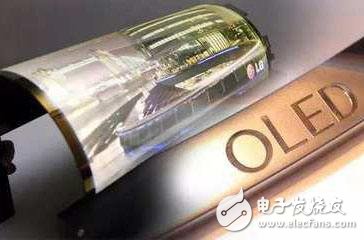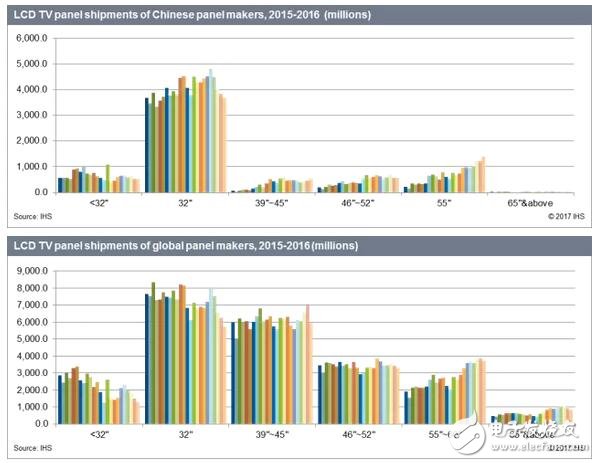Recently, with the tension between China and South Korea due to the deployment of Sadr, it has extended to the economic and trade field. In the electronics industry chain, the panel industry has also heard the voice of boycotting South Korea. Experts estimate that the total economic loss of South Korea is likely to be 17 trillion won, which is equivalent to 1.07% of gross domestic product (GDP). In April, the market once again spread that the Chinese government asked TV manufacturers and other operators to boycott the Korean panel and not to purchase from LGD and Samsung. Before the production capacity of local panel factories such as BOE and Huaxing Optoelectronics caught up, they turned to Innolux and AUO in Taiwan. According to IHS Markit's latest large-size panel shipment report, in January this year, mainland panel manufacturers, including BOE, Huaxing Optoelectronics and CLP Panda, shipped 33.2% of LCD TV panel shipments in the month. It is lower than the 36.4% of Korean manufacturers, but it is significantly ahead of Taiwan's 27.6%. Taiwan, which has a high overlap with South Korea’s industry, has no schadenfunding capital. In particular, cross-strait relations have reached a stalemate after Tsai Ing-wen’s coming to power. Then there are issues such as Sino-US trade disputes and China’s manufacturing 2025. If the handling is slightly inadvertent, South Korea’s bitter fruit today will become a nightmare for Taiwan tomorrow. The geopolitical risks on the Korean Peninsula have expanded, and Samsung, Lejin Display, SK Hynix and other South Korean electronic components have been shipped. South Korea is now the world's largest supplier of memory and panel. At the time, the panel and memory are out of stock in the near future. Once the North Korean war has affected the shipment of the Korean factory, the impact on the global electronics industry is enormous. South Korea is the production base of DRAM and NAND Flash. It is estimated that there will be a capacity of 5-6% and 30% respectively. Once it is unable to produce or export due to the war, it will have a considerable impact on the DRAM industry. At present, the tension in North Korea seems to be a strong situation. At the touch of a button, it has attracted more attention. According to Wu Yating, research associate of DRAMeXchange, DRAM, DRAM is currently in tight supply. If further provocation occurs, it will cause further panic among buyers, which will push up a new wave of DRAM. The legal person believes that if the United States and North Korea really fight, manufacturers with production capacity can be expected to benefit, and the Taiwanese factories are mainly based in South Asia and Huabang. Wu Yating pointed out that the supply of DRAM is tight. This year, there was a situation in which the buyer was nervous to pick up the goods in advance. Under the North Korean incident, I am afraid that the buyer’s mentality will be more tense. She said that the tight supply can be seen from two aspects. At the psychological level, the first is the impact of the real level. At present, there is no sign of war. However, if there is further provocation, causing the buyer to panic, the first step will be that DRAM prices will rise first and then push up a wave of gains. . The legal person believes that once North Korea really breaks out of war, manufacturers with DRAM capacity will benefit. At present, South Korea's DRAM production capacity totals 5-6 percent, and Taiwan's South Asia Branch and Winbond are estimated to be about 2%. In the case of the buyer grabbing capacity, the module factory may also be affected indirectly. In fact, the price of DRAM has maintained an upward trend this year. According to the latest research of DRAMeXchange, due to the frequent problems of the original advanced process quality, the supply of standard memory in the second quarter has not been relieved, and the price increase exceeded expectations. At the transaction price, the average price of the 4GB DDR4 module contract in the second quarter came to US$27, which was about 12.5% ​​higher than the US$24 in the first quarter. Overall, the trend of continued upward price of memory in the second quarter has not changed. Except for standard memory, the increase of server memory is also quite obvious, and it is estimated to reach 10~15%. The mobile memory is currently the smallest increase. Before the shipment momentum of smart phones in China has not been greatly improved, it is estimated that the second quarter of mobile memory will only increase by about 5%, of which eMCP products are out of stock due to NAND. For the sake of this, the increase was relatively high, about 5%.
Withstand high voltage up to 750V (IEC/EN standard)
UL 94V-2 or UL 94V-0 flame retardant housing
Anti-falling screws
Optional wire protection
1~12 poles, dividable as requested
960 Series Terminal Blocks,Electrical Terminal Strips,Electronic Terminal Blocks,Nylon Terminal Block Jiangmen Krealux Electrical Appliances Co.,Ltd. , https://www.krealux-online.com
